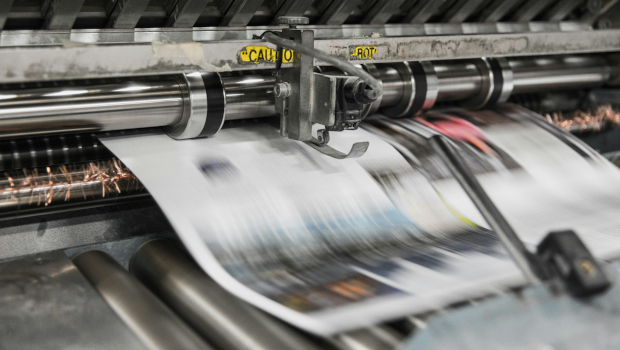
Smart printing: AI and IoT integration transforming printers
In association with 123ink.ie
In the rapidly evolving landscape of technology, the integration of artificial intelligence (AI) and Internet of Things (IoT) has introduced a new era in printing. Smart printing fueled by AI and IoT is changing traditional printing processes, improving efficiency, reducing costs and introducing innovative new features. These cutting-edge technologies are reshaping the way users interact with printers.
Enhanced automation
One of the most significant advantages of smart printing is its ability to streamline workflows through automation. AI-powered algorithms analyse printing patterns and optimise printing settings. Printers equipped with IoT sensors can detect issues such as low ink levels, paper jams and alert users when these happen. These IoT sensors even trigger self-repairs. Printers that include IoT are colour laser printers, inkjet printers, all in one printers, 3D printers and label printers. This approach ensures uninterrupted productivity.
By printers using AI and IoT they can now predict maintenance needs before they happen. Machine learning algorithms analyse use patterns and performance data to anticipate system failures. If a printer detects that a particular part is approaching the end of its lifecycle, it can automatically order a replacement part, schedule self-maintenance or alert service technicians. This predictive maintenance not only reduces unexpected downtime but it also extends the lifespan of printers.
Personalised printing experience
AI-driven personalisation is another element of smart printing. By identifying user behaviour, preferences and data, printers can create settings that relate to user’s preferences and needs. A printer equipped with AI can adjust colour saturation, resolution and paper type based on what the application is. This type of customization ensures that each printed document meets the needs and expectations of the user.
Cost reduction
Smart printing solutions also contribute to cost reduction. AI algorithms can optimise ink or toner use by adjusting ink density and layout. AI can reduce consumption without compromising print quality. IoT-enabled printers can monitor supply levels and reorder consumables automatically when stocks run low, eliminating the need for manual inventory management and minimising waste.
User interaction
Printing user experience is undergoing a revolution thanks to the integration of artificial intelligence and Internet of Things technologies. From setup to everyday use, the user experience with smart printers is becoming more intuitive. AI algorithms analyse user preferences and identify printing habits to optimise settings automatically. IoT enables remote monitoring and management of print jobs from any location. With these simplified interfaces users can effortlessly navigate the more advanced features of smart printers, colour laser printers, all-in-one laser printers and inkjet printers in comparison to traditional printers. As AI and IoT continue to advance, the user interaction with smart printing technology will only advance too. It will become more intuitive and frictionless.
Security and data
Security concerns surrounding printers have become increasingly more prevalent. Smart printing addresses these concerns by implementing security measures powered by AI and IoT. Printers equipped with advanced authentication mechanisms, encryption protocols and threat detection algorithms safeguard documents and prevent unauthorised access. IoT sensors monitor network activity and detect cyber threats ensuring the safety of print data.
Future outlook
The integration of AI and IoT in printing is still in its infancy. However, with continuous advancements innovations are on the horizon. AI algorithms and IoT will become more sophisticated enabling smart printing to continually evolve, offering new capabilities and printing functionalities. The future of smart printing holds great potential for transforming the way we interact with printed materials in both personal and professional office environments.
Smart printing that is driven by AI and IoT integration represents a massive shift in the printing industry. By using the power of intelligent algorithms and connected devices, smart printers offer enhanced efficiency, personalised experiences, cost savings, and improved security. As technology progresses, smart printing will play a pivotal role in shaping the future of printing. It will pave the way for more intelligent, connected and sustainable printing systems.







Subscribers 0
Fans 0
Followers 0
Followers